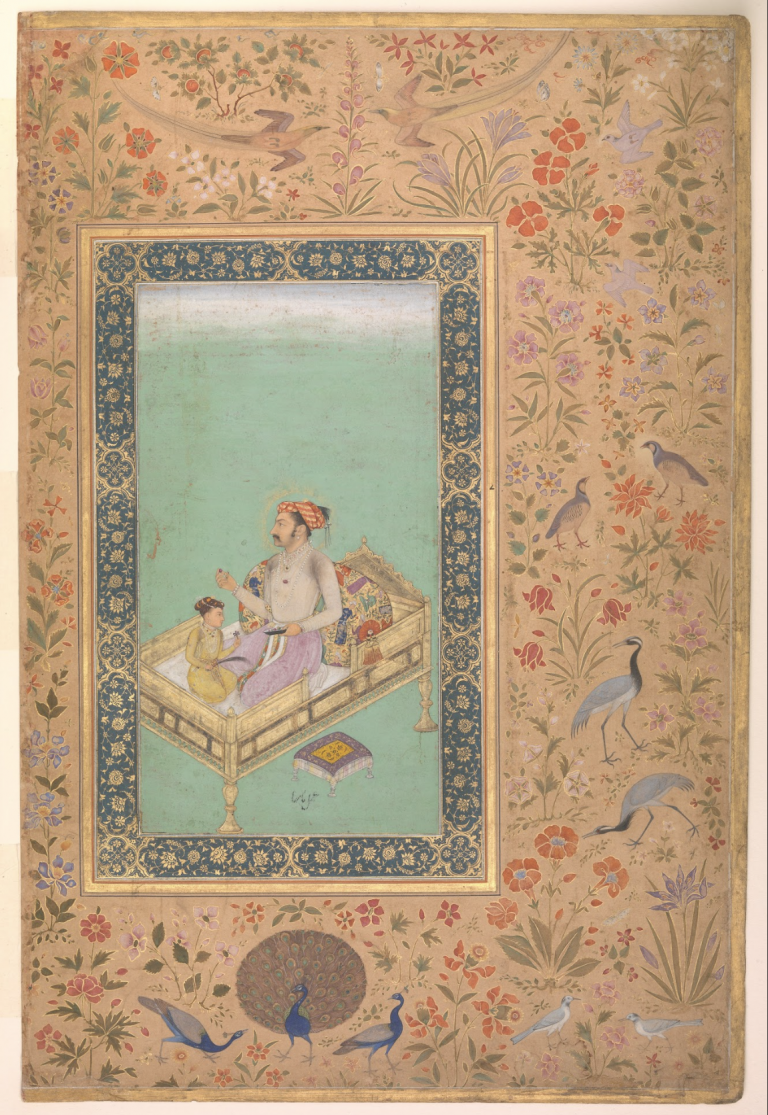In Wood Working at the End of the World, poet Ocean Vuong evokes the kinship forged through contact: ‘Then it came to me, my little life. I remembered my life / the way an axe handle, mid-swing, remembers the tree.’ In the recent works of Manisha Gera Baswani, repair and tending are transformative acts with complex contours, reminding us that healing and growing are interlaced with pain and grief, and that the fabric of life is studded with harvest and hibernation. Occurring after a decade since her previous solo, ‘… and the dots connect now’ was momentous for reasons beyond the extended period of its arrival. Showcasing works in the media of painting, installation, paper and cloth, the exhibition offered viewers a taste of Gera’s expansive art practice, driven by an impulse to research and contextualise personal embodiments within the wider frame of collective history through everyday symbols and portents.
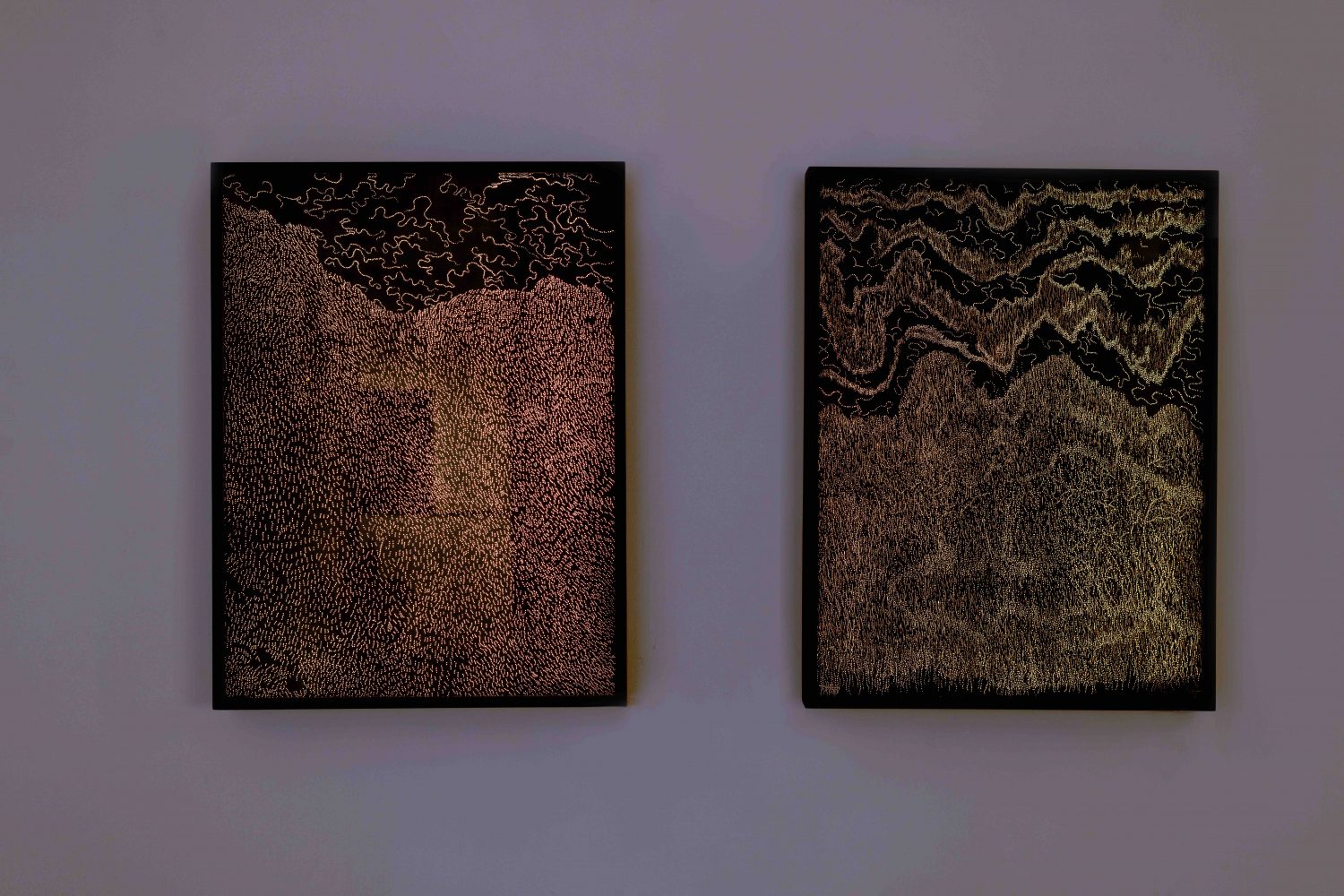
Presenting a powerful series of ‘pin-incision’ works, the exhibition foregrounded the labour of care, its discipline and exacting rigour often overlooked in discussions of healing. Who performs care in domestic spaces? Baswani’s choice of introducing the quotidian, ubiquitous ‘pin’ as the tool has antecedents in the figures of women pulling a thread through a needle in the canvases of Arpana Caur; people weaving amidst conflict and terror in the scrolls of Nilima Shiekh; and the hundreds of gleaming needles sticking through tapestries by Aisha Khalid. The humble pin, which is often relegated to the purpose of support or preparation, concealed or discarded from view, is made visible in its effects. Baswani’s personal tryst with illness and recovery in her familial life has condensed into redolent wisdom: to persist in acts of making amidst turbulence, to return to the loom, the needle box, the fields, and the gendered work that sustains life.
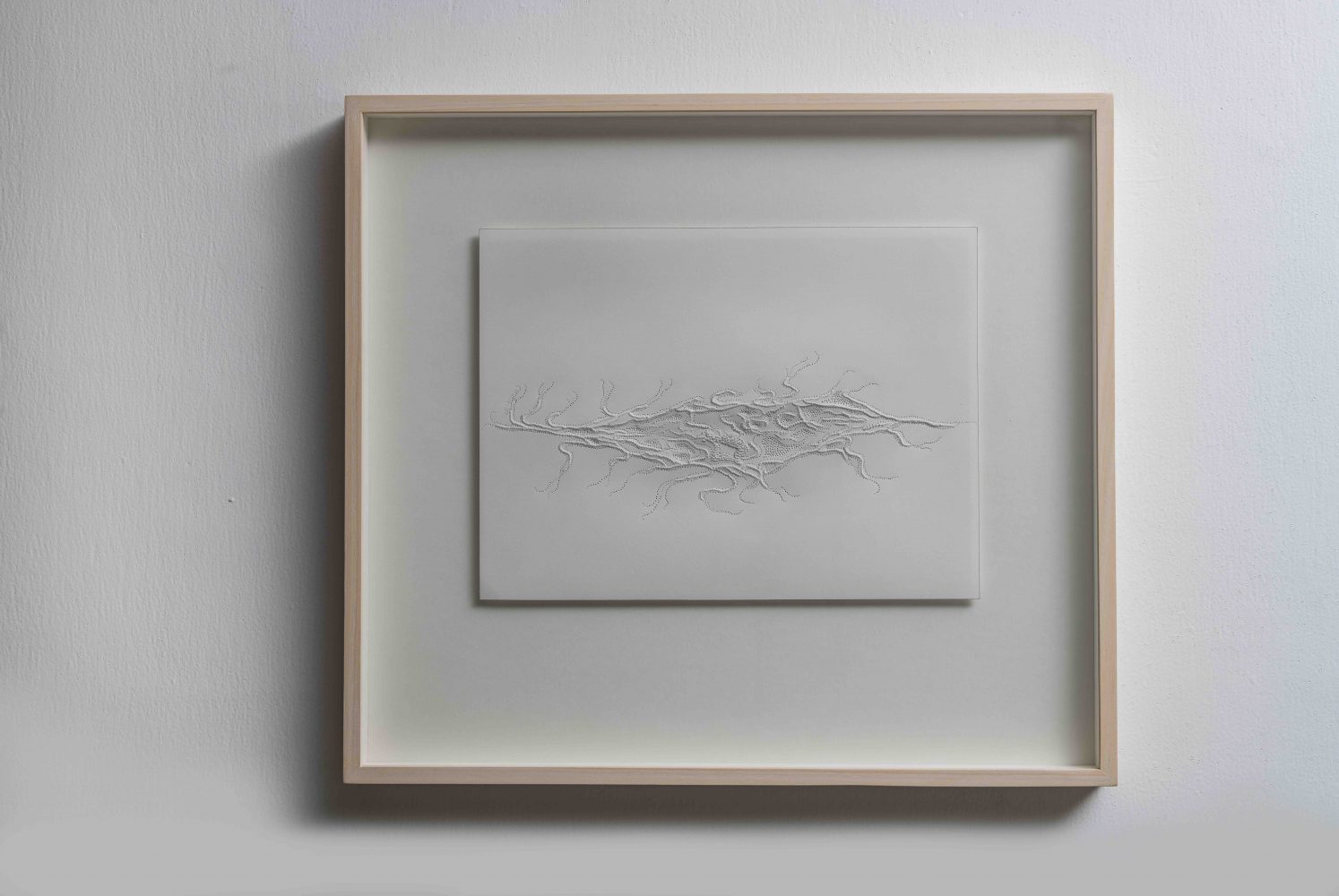
Through each successive incision with pins, Baswani excavates the dimensionality inherent in paper, raising clefts on the surface which simultaneously draw an umbric form with light. In Heavenly Scars, a small pin incision work on paper, the strength of the technique is at its purest: comprised only of pinpricks, the surface brims with fluid, dotted lines, sifting and gathering, reminiscent of river basins or a splintering tissue on the skin. The phenomenon of piercing, which moves through stages of contact, immersion and emergence, transforms both the needle and the paper and creates a sculptural mode out of flatness. In the spectacular Beej, pin marks swarm over and across, rising from below unto the swirling clouds of the sky in a vivid rendition of sporulation, the affirmation of life. The skin, for Baswani, be it in nature or in the human body, is not a fence but a shoreline—porous and immersed in the world. Through meditative punctures, paper and cloth—once pulp and fibre—assume the exposure of skin, with its vulnerability and capacity to hold residues of time.
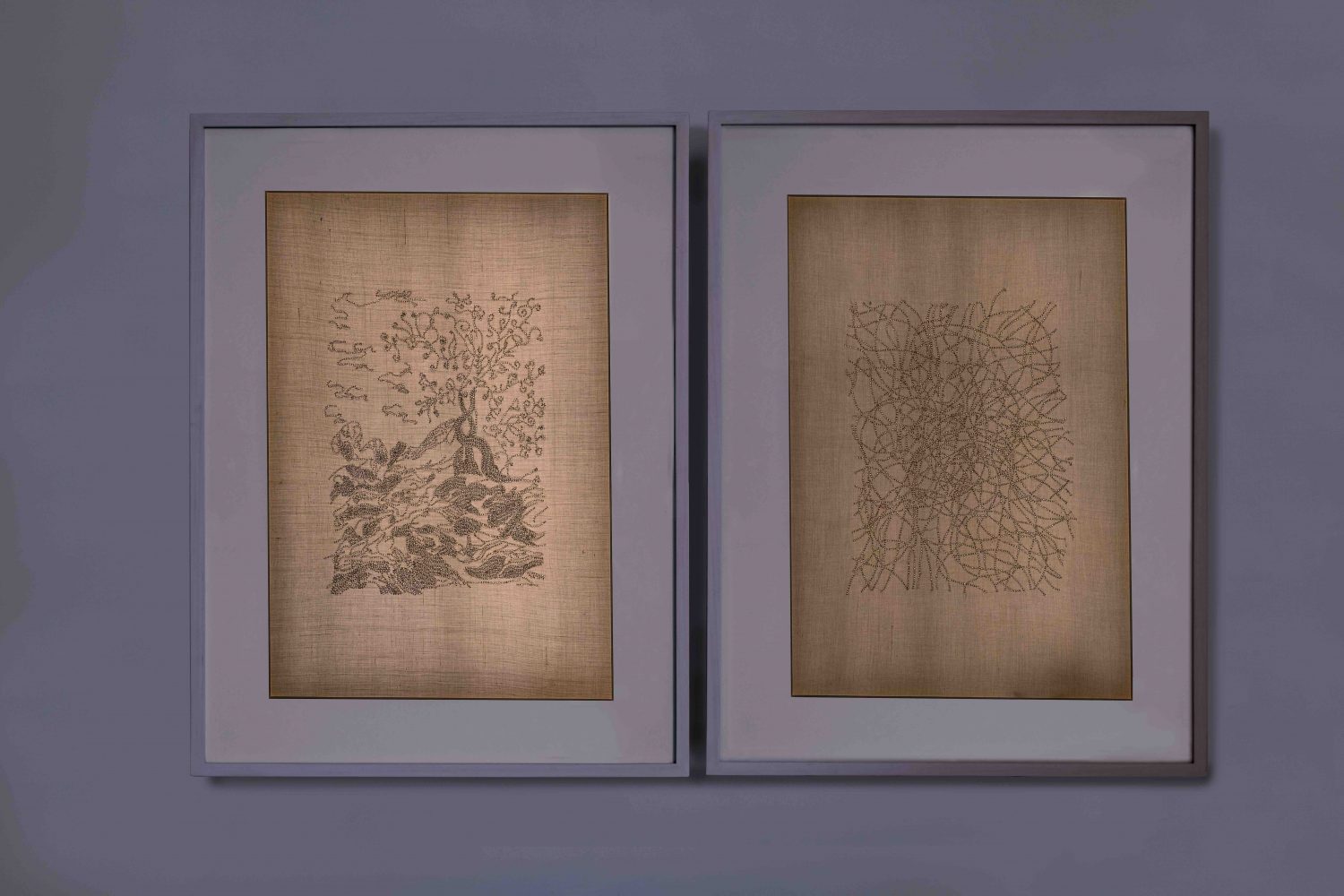
In Bejewelled Spring, the roots of a wizened tree run deep into the ground. This work utilises techniques from the tradition of chikankari embroidery, by working through white-on-white stitches to depict a landscape with slightness. Writing about the role of weaving and stitching in shaping notions of femineity, Rozsika Parker noted its counter-side in the seminal feminist text The Subversive Stitch (1984):
The art of embroidery has been the means of educating women into the feminine ideal, and of proving that they have attained it, but it has also provided a weapon of resistance to the constraints of femininity… Limited to practicing art with needle and thread, women have nevertheless sewn a subversive stitch—managed to make meanings of their own in the very medium intended to inculcate self-effacement.
While other works bear the traces of pins, the diptych Healing, a mixed media work on paper, brings this tool to our field of vision. Tied with a red thread, a series of pins settle neatly in a row on cream-coloured paper in one part of the diptych; the other, a vivid blue, reminiscent of the sea, holds threads made of gouache churning around a pin. Wading into the waters of persistence against bodily frailty and battered yet fertile landscapes, Baswani’s pin incision works instruct us in circuitous routes to inner strength.
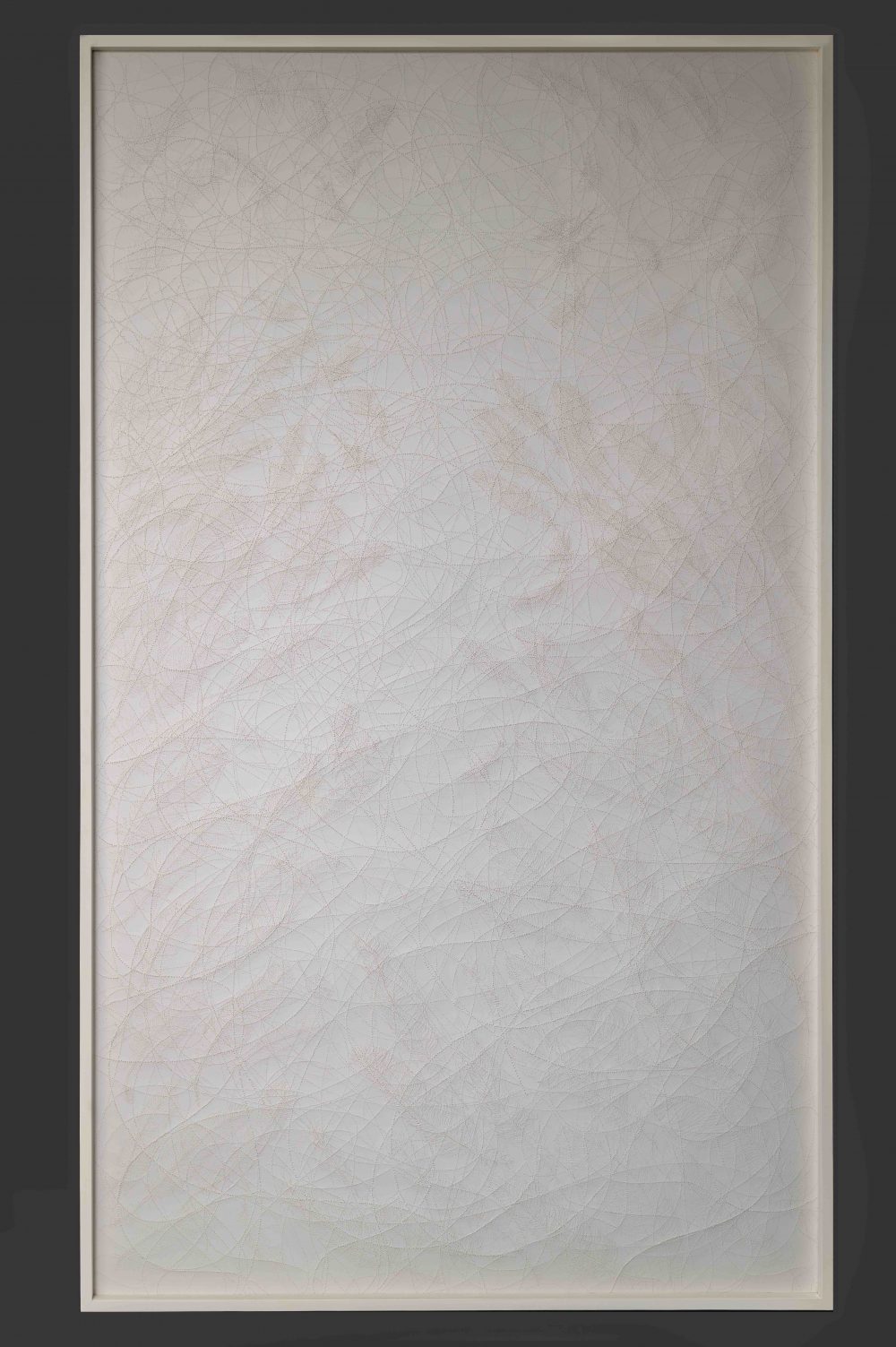
‘… and the dots connect now’, solo show of Manisha Gera Baswani, Gallery Espace, New Delhi, 2 April–10 May 2022.













